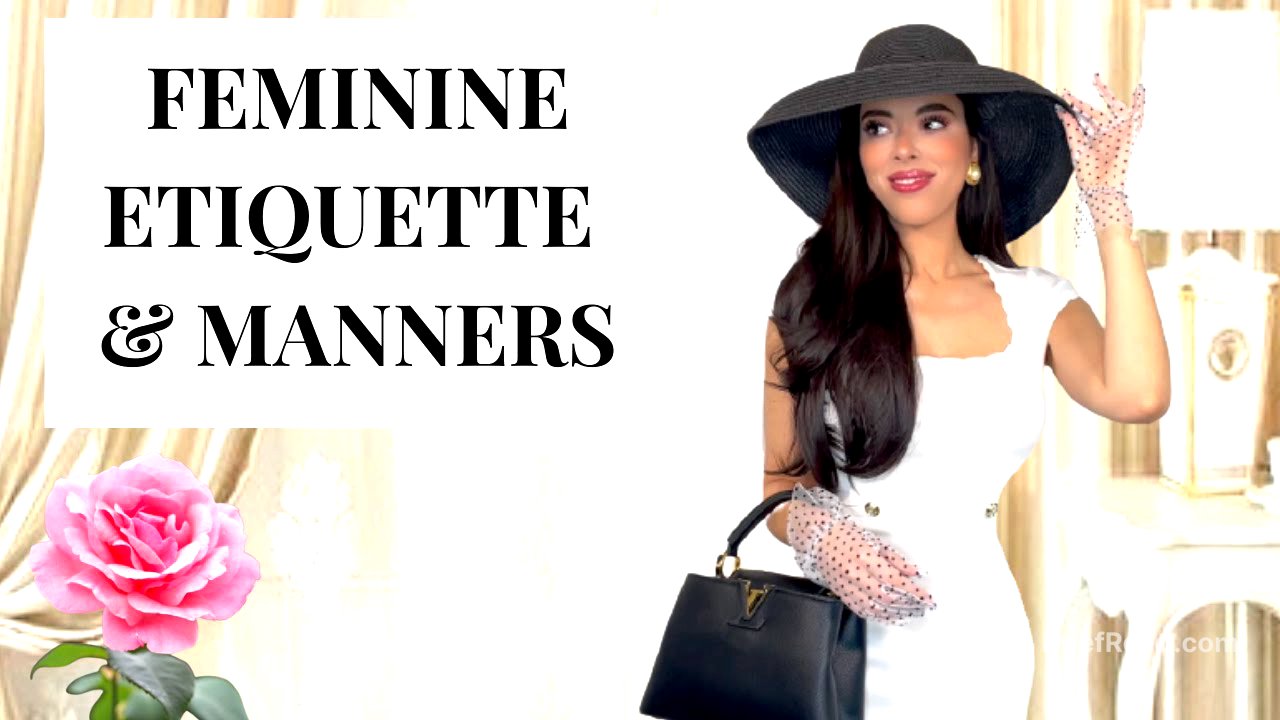TLDR;
This video discusses the importance of feminine etiquette as a rare and valuable asset that can set you apart. It covers various aspects of etiquette, including presentation, body language, conversation skills, conflict resolution, and dining manners. The video emphasises the significance of respect, mindfulness, and emotional intelligence in displaying true elegance.
- Etiquette is a rare skill that enhances elegance and sets individuals apart.
- Cultural context is crucial; etiquette varies significantly between countries.
- Presentation and body language create lasting first impressions.
- Effective communication involves active listening and respectful conversation.
- Graceful conflict resolution and emotional intelligence are key indicators of true elegance.
Introduction to Feminine Etiquette [0:00]
The video introduces the concept of feminine etiquette and its importance in today's world. The presenter notes that genuine good manners are increasingly rare, making those who possess them stand out. Etiquette is about showing respect and kindness, aiming to behave appropriately in various situations and avoid causing offence. Mastering etiquette can transform you into a unique and elegant woman, setting you apart from the crowd.
The Rarity and Value of Etiquette [1:31]
The presenter emphasises that etiquette is a "lost art" that cannot be bought; it must be learned and practised. Elegance and good manners significantly influence how others perceive you, creating a positive impression and fostering comfort through respect and education. The presenter highlights that etiquette is not just about appearance but about behaviour and respect.
Cultural Differences in Etiquette [2:29]
Etiquette varies significantly across different countries, and it's essential to educate yourself on the cultural norms of the places you visit. For example, dining customs differ greatly; in France, using a fork and knife is standard, even for burgers, while in India, eating with your hands is appropriate. The presenter shares her fascination with these cultural differences and encourages viewers to be mindful of them.
Presentation Etiquette [4:07]
Presentation is the first thing people notice, so it's crucial to dress appropriately. Wearing casual clothes to a job interview or a formal event is inappropriate, just as wearing a formal gown to a casual barbecue would be. While it's generally better to be overdressed than underdressed, it's important to match your attire to the occasion, such as dressing up when visiting a fine dining restaurant.
Body Language Etiquette [5:44]
Body language significantly impacts first impressions. Maintaining a straight posture, walking gracefully, and making eye contact are all important. A smile and a warm greeting can also make a big difference. Practising these habits will eventually make them feel natural.
Conversation Etiquette [6:28]
When greeting people, do so with a smile and introduce yourself, including your first and last name, especially in professional settings. Remembering and using people's names is important, as forgetting them can be seen as rude. During conversations, avoid interrupting others or dominating the discussion. Being a good listener is a valuable and elegant quality.
Topics to Avoid in Conversation [8:21]
Avoid asking overly personal questions about topics such as politics, religion, finances, weight, relationships, or intimate details. If you sense that someone is uncomfortable with a question, change the subject or reassure them that they don't need to answer. Empathy and mindfulness are key to respectful conversation.
Conflict Resolution Etiquette [9:12]
Avoid gossiping, as it creates a negative image. Handle conflicts gracefully by remaining calm and composed, even when others are rude or aggressive. It's often best to remove yourself from the situation. Responding calmly demonstrates true elegance and emotional intelligence. Surrounding yourself with people who handle conflicts healthily is also important.
Setting Boundaries and Dining Etiquette [11:10]
If someone brings up a topic that makes you uncomfortable, politely state that you would prefer not to discuss it, setting a boundary. When dining, keep your phone and handbag off the table. Wait for everyone to be served before you start eating, and avoid talking with food in your mouth. Take your time to eat and appreciate the meal, maintaining a soft, feminine energy and allowing others to speak.
Conclusion [12:56]
The presenter concludes by thanking viewers and encouraging them to like the video and follow her on Instagram for more content on etiquette. She reiterates that women who embody these qualities are rare and stand out, leaving a lasting impression.









